Srichakra at Chidambaram Sri Sivakami Amman Temple (Article By Dr.A.Subbian, Prof.& Head, Department of History, Annamalai University –
XV National IASLIC Conference Souvenir, Published By Annamalai University Library, Chidambaram, 1992.)
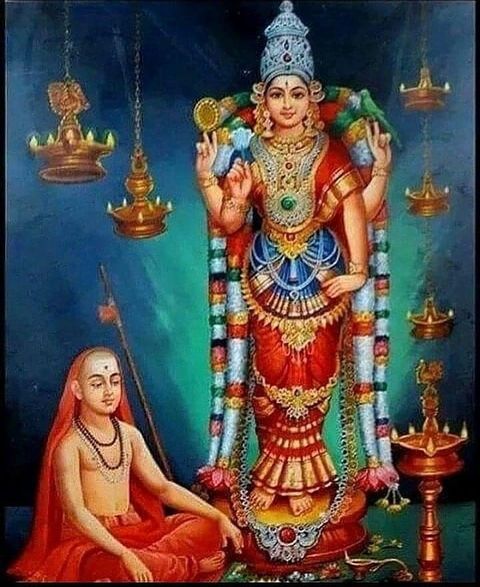
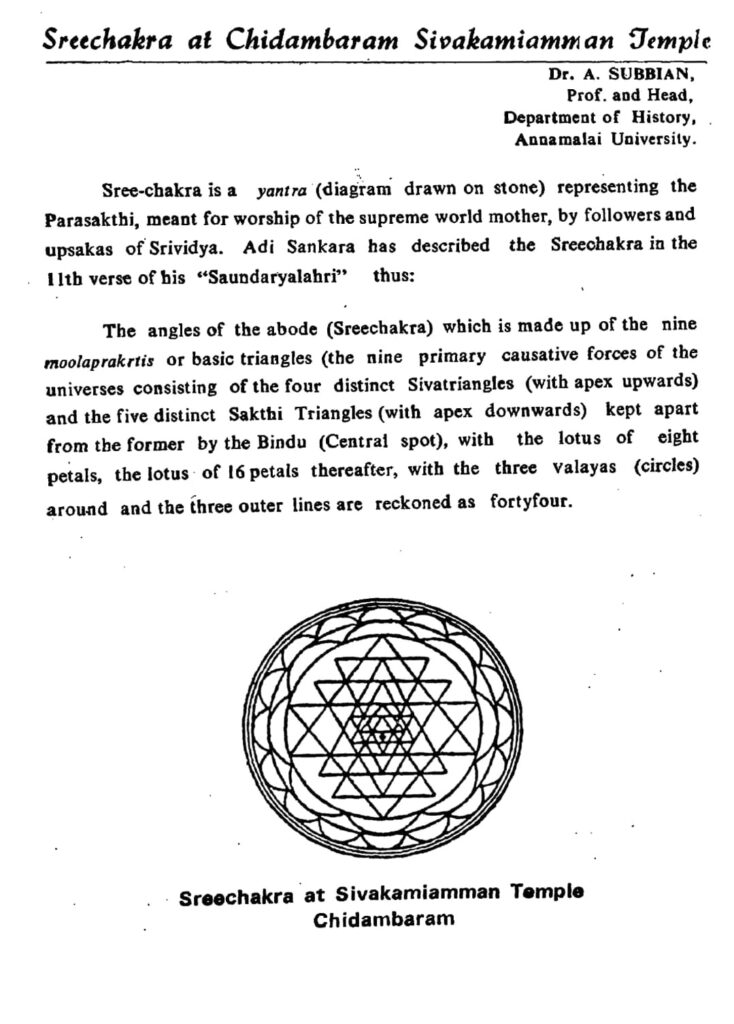
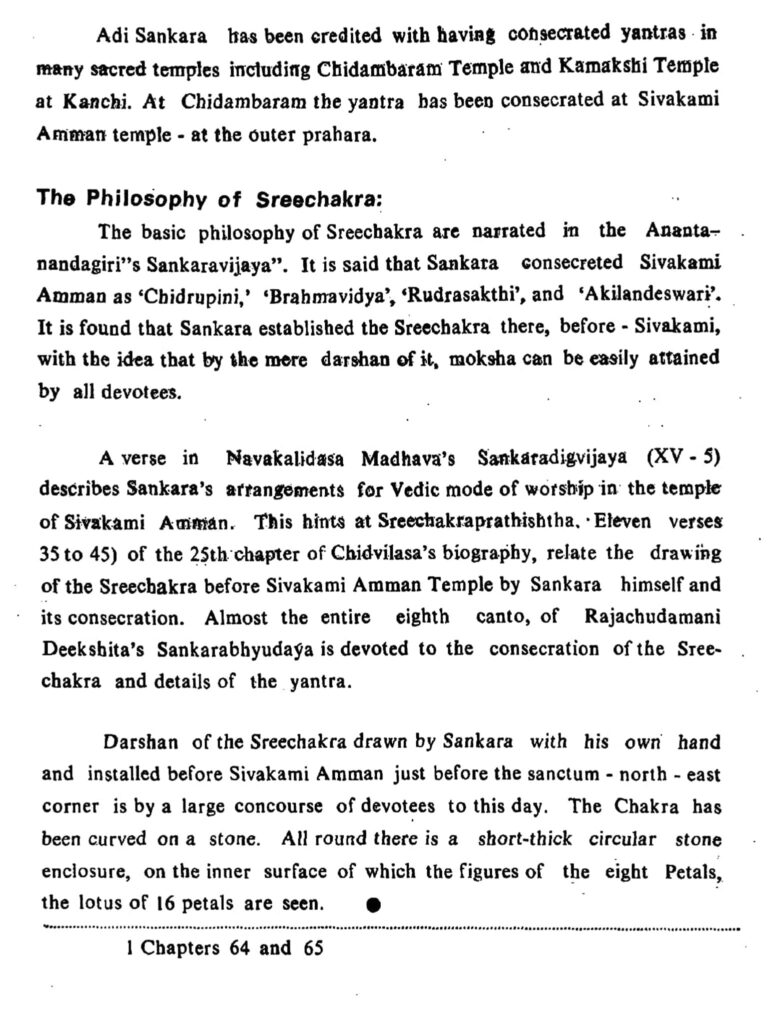
Srichakra at Chidambaram Sri Sivakami Amman Temple (Article By Dr.A.Subbian, Prof.& Head, Department of History, Annamalai University –
XV National IASLIC Conference Souvenir, Published By Annamalai University Library, Chidambaram, 1992.)



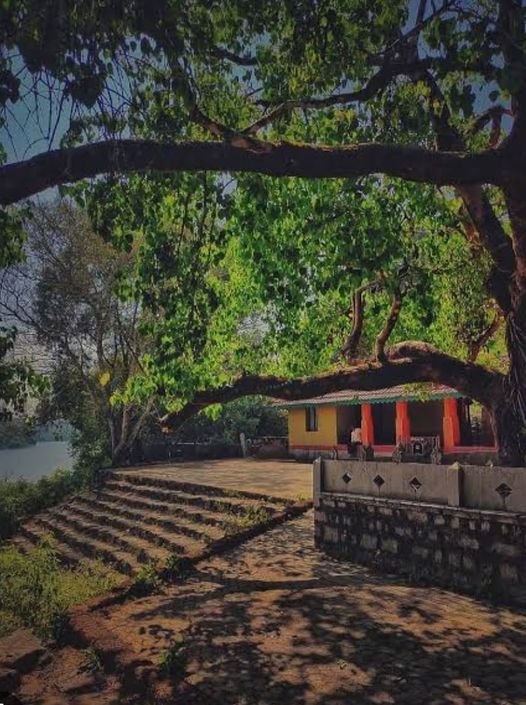
One of the acharyas of the Dwaraka Peetha removed himself to Malabhagalu situated to the North of the present Kolar. During the time of Sivappa and Bhimappa Naik of Bidanur, the then Acharya of Dwaraka (Mulabhagalu) Matha was invited to the Durvasapura. He accordingly visited the place and had a Matha constructed there. The principal deity worshipped in the temple is Sri Gopalakrishna. There are also murtis of Sri Chandramaulisvara Swamy and Sri Gayatri Devi.
(Original Article: Written by Sri Anantanandendra Swami of Upanishad Brahmendra Matha – Published by Prof.S.Soundararajan,Bangalore)
दसो दिशाओं के संरक्षक उपर्युक्त दशनामी संन्यासियों की संगठन शक्ति अक्षुण्ण बनी रहे और कालान्तर में उनके संगठन में किसी पृथकतावादी तत्त्व का समावेश न होने पाये, इसके लिये उन्होंने दशनाम संन्यासियों को निम्न रुप से एक ही शरीर के विभिन्न अंगों के रूप में प्रतिपादित किया-
” ब्रह्मरन्ध्रे पुरी चैव ललाटे चैव भारती जिह्वाग्रे सरस्वती चैव बाहौ च गिरिपर्वतौ।
कुक्षौ तु सागरश्चैव वनारण्यौ च जंघयोःपादोः तीर्थश्रमौ चैव दशनाम प्रकीर्तिताः।”

Shankarite Institutions have been at the forefront of patronising and encouraging the publication of rare shastra granthas and scholars in all parts of the country. We have seen earlier about the publication of Shivarahasyam Manuscripts by the North and South Indian scholars in 1932 & 1934 and the interactions of Tarkaratna Panchanana Bhattacharya of Bengal in Kashi.
Another such account of Kanchi-Kashi Sambandha is the account of Mimamsakesari Vidyavachaspati Mahamahopadhyaya Padmabhusana Pandit P. N. Pattabhirama Shastriji. He was born in 1908 in Palasur village near Kanchipuram, initially educated at Tirupati and later in Varanasi under M.M. Chinnaswami Shastri. From there he went to Kashi and served at Banaras Hindu University. Pandit Madan Mohan Malaviya later recommended his appointment as Principal of Maharaja Sanskrit College, Jaipur. His dedicated mastery of the sastric tradition of Bharatam and his writings, lectures and editions on Mimamsa remain as evidence of his work.
The All-India Kashiraj Trust was established in 1951 and its silver jubilee was celebrated on 24th October 1981. The recods of the proceedings started with a mangalacharana by Shri Ganeshvara Dravid and Shri Pattabhirama Shastri read out a sandesha from Shri Chandrashekharendra Saraswati Swamigal, the 68th Acharya of Shri Kanchi Kamakoti Pitham that was specially sent for the occasion. This is published in the summary of the activities of the Kashiraj Trust in 1982
Pt. Pattabhirama Shastri’s disciple Pt. Dr.Mandana Mishraji writes in his general editor’s preface of the edition of the Lal Bahadur Shastri Kendiya VidyaPith 1984 wries in his introduction to “Shabara Bhashya with the Tuptika Varttikabharana, Tantrashikhamani and Bhashya Sandarbha Yojini” says that it was only due to the anugraha of Shri Kanchi Kamakoti Acharya that his guru Shri Pattabhirama Shastri was able to do this work and seeks their continued blessings for the good health and strength for Shastri to complete this work.
The Tuptika is written by Shri Venkateshvara Dikshita, the architect of the 72-mela system and the son of Advaita Vidyacharya Govinda Dikshitar. The relationship of the matrilineal side of this Govinda Dikshita family to the purvashrama families of Shri Kanchi Kamakoti Pitham is well-known. The Tantrashikhamani is written by Shri Rajachudamani Dikshita, the youngest son of Shri Ratnakheta Dikshitar and also a student of Shri Nilakantha Dikshitar. Rajachudamani Dikshita was a gifted writer of kavya and the author of Shankarabhyudaya, a literary work on Shankaracharya which traces his birth to His siddhi in Kanchipuram.
The story behind this publication is narrated by Pandit Pattabhirama Shastri in the introduction titled “Yatkinchit”. Shastriji says as follows:
“Once I went to Shahabad near the banks of Pampa river in Karnataka to have darshana of the “walking God”, Shri Chandrashekarendra Saraswati Shricharana, of Shri Kanchi Kamakoti Pitham established by Shri Jagadguru Adishankaracharya with my spouse. My two daughters were also with me. Shricharana was getting ready to have his snana. Knowing that I had come, he beckoned me. All of us went towards Him. He asked me if I can stay there for 3-4 days and if I knew someone near by. I responded that I will stay as long as Shricharana wishes and that I will get to know someone who lives around the area. Then someone said they will make arrangements for my stay with family hear near the banks.”
Then a young man who they knew from Kolkata introduced himself to them and took them to his home for three days. Then for three days we had the fortune of darshana of Shricharana who was in the state of Kashtamauna for three days. On the fourth day having learnt that the Jagadguru completed His maunavrata and was speaking, we went. The Karunamurti looked at us and beckoned us. He asked us what our daily activities were and how many students were studying and what I was teaching and what I was publishing. Then he asked me why I had not yet edited and published the TupTika of Shri Venkateshvara Dikshita and the Tantrashikhamani of Shri Rajachudamani Dikshita.Then he detailed the lives of the two granthakarthas. When I replied that that the manuscripts of these two were not available to me in full, He said that manuscripts of these works will be available in the Tanjavur Sarasvati Mahal and Government Oriental Manuscripts Library, Madras and in Mysore Oriental Library and you may try and obtain the copies. Publish whatever you can find.”
Three hours went by in this conversation and thus instructed. Then Shricharana was getting ready for His anushthana and we sought His permission to go back to Varanashi and then mentioned that Shricharana has given ajna to publish this work but I fear that I don’t have the kind of vaidushyam and am afraid at each step I take”. Shricharana raised His hand blessed me and said “You will have a long life and take up this work at the earliest and complete it!”
Then he details the accounts of how he collected the various manuscripts from different locations and also found a copy from the collection of his teacher Chinnaswami Dikshitar and with prayers to Shricharana he began the laghu tika that accompnies this text and how this was published with the assistance of his student Mandana Mishra.
Panditaraja Pattabhirama Shastri was also the editor of Advaita Grantha Kosha. In the year 1946, Shri Shankaracharya of Shri Kanchi Kamakoti Mulamnaya Sarvajna Pitham expressed a desire that a comprehensive list of all manuscripts and books pertaining to Advaita be compiled and published. This was prepared by a disciple of Sri Ishtasiddhindra Saraswati Swami of the Upanishad Brahmendra Matha Kanchipuram and edited by Panditaraja Pattabhirama Shastri and was released in 1964.
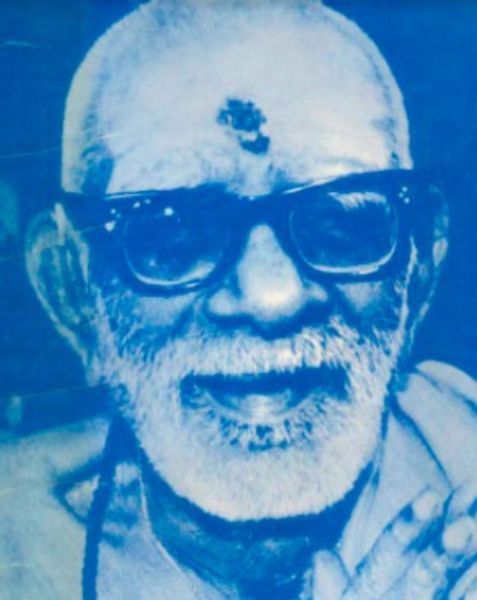
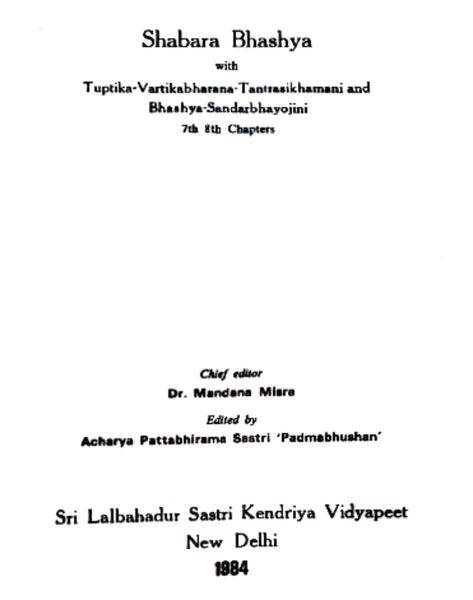
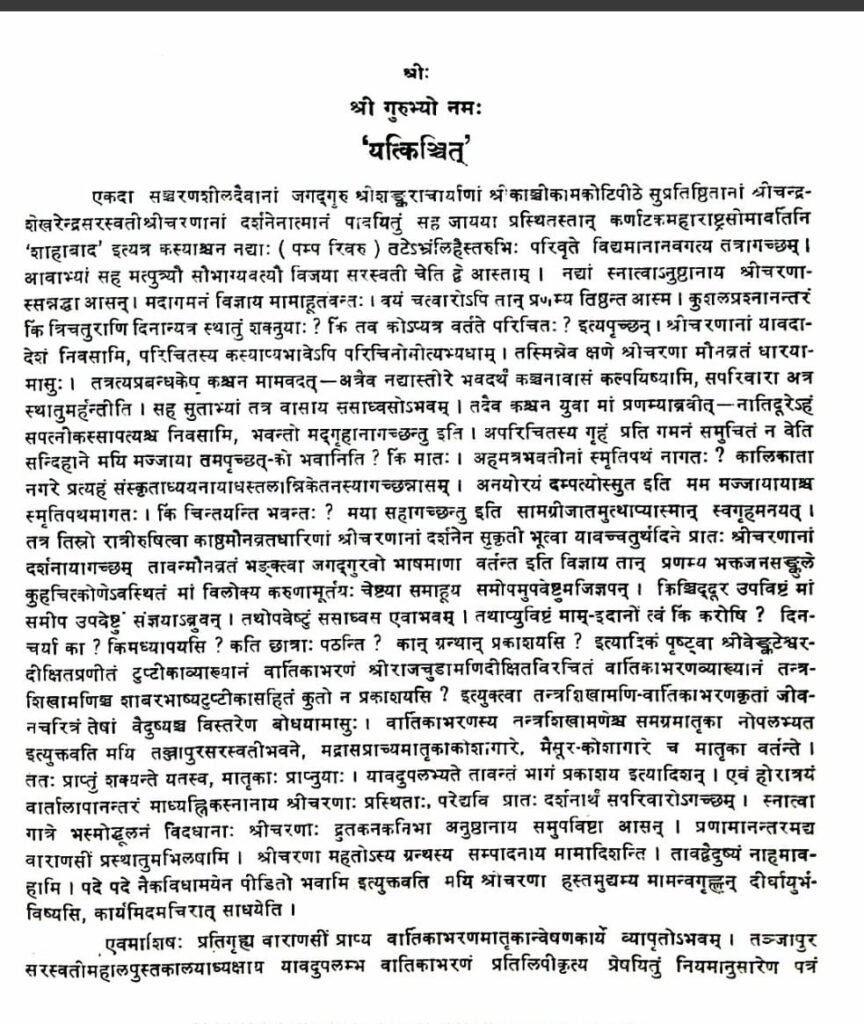

तस्मात् प्राप प्रयागाख्यं स्थलं पुण्षविवर्धनम् ।
गङ्गायाः यमुनायाश्च सरस्वत्याश्च सङ्गमम् ॥
-Anandagiri Sankaravijaya, Prakarana 35
श्रितमुर्मुरमुद्धरंस्त्रिवेण्यां यतिराड् भट्टमघानि वो वितृष्णात् ॥
– Gururatnamalika
How can one possibly identify Madhava with Vidyaranya, who flourished in the 14th century, when Madhava pays homage to Vyasacala of the 16th century and quotes extensively from Rajacudamani Dikshita of the 17thcentury?
The Lost Leaves – (Inquiry on the Mystery of the Missing Portion of Valliisahaya’s Manuscript on Sri Sankaracharya and Kanchipuram.)
Vallisahaya Kavi of the Vadhula gotra was a contemporary of Sri Abhinava Narasimha Bharati Swami, the 28th Pontiff at Tunga Sringeri matha from 1767 to 1770 C.E. He is the author of the Acarya Digvijya Champu in 7 kolahalas.
In his work, Vallisahaya pays homage to Anandagiri and Vidyasankara, primarily following the Cidvilasa-Anandagiri version. Notably, he explicitly mentions Mandanamisra as the grihastha name of Suresvara and Sarasvani as Mandanamisra’s wife’s name. However, he does not appear to be aware of anyone by the name of Visvarupa.
Unfortunately, the manuscript of Vallisahaya’s work is incomplete, with the narrative abruptly ending after recounting Sri Sankaracharya’s visit to Kanchi. Eminent scholars opine that since the manuscript abruptly ends with Kanchi, it is reasonable to presume that the remaining verses of Sankara’s stay and samadhi, as per Vallisahaya’s account, were intended to be in Kanchi as well.
This missing section could have contained valuable insights into Sankara’s final days, his spiritual attainment, and his connection to Kanchi.
It is possible that individuals who disagreed with this fact might have deliberately removed that portion of the manuscript.
Despite the missing section of the Acarya Digvijya Champu, scholars continue to explore alternative sources to glean insights into Sankara’s final days in Kanchi, the only Mokshapuri in South India.
( Sources: 1. PROBLEMS OF IDENTITY- MANDANA MISRA-SURESVARA By Vidyasagara Vidyavacaspati P P SUBRAHMANYA SASTRI B.A. (OXON), M.A., Professor of Sanskrit, & Comparative Philology, Presidency College, and Curator, Government Oriental Mss Library, Madras.
Sri Sankara gurukulam Journal, Vani Vilas Press, Srirangam.
2. THE PLACE OF SANKARA’S DISAPPEARANCE By W.R.Antarkar, The Asiatic Society of Mumbai Journal.)
When did Sri Vidyaranya Swami attain samadhi ?
Is His Aradana performed in any of the mathas revived or established by Him?
If not, why?
28th October 2020 : Edneer Matha Shri Sachidananda Bharati Swamiji Pattabhisheka
In the cultural heritage of India two streams viz, Pravirtti and Nivritti based on the Vedas are flowing. For these two streams the original canal is Lord Siva in the form of Uma and Mahesvara. This form indicates the path or Pravirtti. For the path of Nivritti the form of Dakshinamurthy is the original source.
In Northern India, when many temples were razed to the ground, during the Mughal period, the tradition of Dakshinamurthy came to fade. From Bengal to Baluchi and Kashmir to Kerala, the upasana of Dakshinamurthy is observed to this day. Yet the scarcity of temples for external worship of Dakshinamurthy are very few.
His Holiness Satchidanandagiri has constructed a temple of Dakshinamurthy near the old temple of Siddhantha Mani where he himself meditated upon Dakshinamurthy. Probably this is the Matha referred to as Dakshinamurthy Matha, at Kasi.
The Guruparampara of Dakshinamurthy Matha also called Dhruvesvara Matha, Varanasi is as follows :-
1. Managiri
2. Meghagiri
3. Ramagiri
4. Satchidanandagiri
5. Amarendragiri
6. Manishagiri
7. Ramananda Giri
8. Nrisimha Giri
9. Niranjana Giri
10. Krishnananda Giri
(This brief note was prepared from ‘Gandivam’-Chaitra Sukla Prathama, 24-3-1974 By Sri Anandanandendra Swami of Sri Upanishad Brahmendra Matha.)